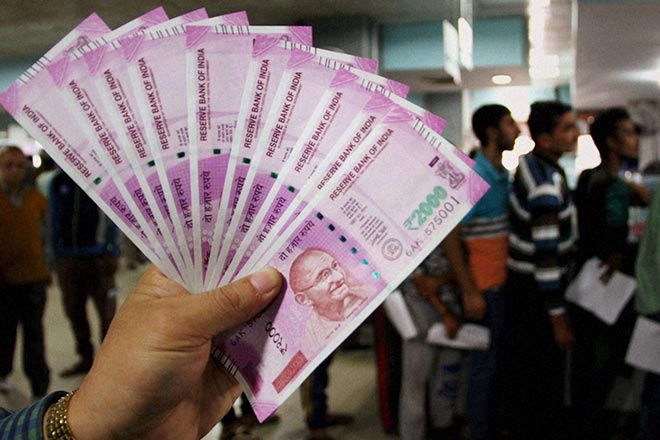One of the biggest achievements of the Modi government seems to have come in the last year of its tenure. The per capita income of the country witnessed the fastest growth under Modi government in 2018-19 which grew at the rate of 11.1 percent. This is the first double-digit growth in per capita income under the incumbent government. On Jan 7th, Central Statistics Organization (CSO) released the first advance estimates of National Income for the fiscal year 2018-19. “The Per Capita Net National Income during 2018-19 is estimated to be 1, 25,397 showing a rise of 11.1 per cent as compared to 1,12,835 during 2017-18 with the growth rate of 8.6 percent,” said the press release by CSO. The average income of an Indian doubled in the last seven years from 63,642 rupees in 2012-12 to 1.25 lakh in 2018-19.
In the last four years of Modi government, average income grew by 45 percent. In 2014-15 per capita income was 86,647 rupees and grew to 1.25 lakh in the current fiscal year. The twin impact of GST and demonetization slowed down the per capita income growth at 8.6 percent 2017-18. However, in long-term, these steps are set to increase the growth in per capita income, as witnessed in 2018-19. The nominal Net National Income (NNI) also registered a 12.5 percent growth in comparison to 10.1 percent in the previous year. “National Income (at Current Prices) is likely to be Rs 167.03 lakh crore during 2018-19, as against Rs 148.49 lakh crore for the year 2017-18,” estimated CSO.
There are huge interstate differences in the country. The southern and western states are relatively richer given higher industrial development in these states. The access to the Arabian Sea and the Indian Ocean make these states the trading hubs for international exports and imports. The financial capital of the country, Mumbai is located in the western state of Maharashtra and it immensely contributes to the development of the state. The western and southern state witness huge labour mobilization from the northern and eastern part of the country because these states offer higher paying jobs in comparison to other parts of the country. The labour cost in southern and western parts of the country is relatively higher.
The income disparity among the states is very high for example, the per capita income in Goa is 3, 75,554 rupees while for Bihar it stands at 38,546 rupees. Hence, the average income in Bihar comes out to be almost 10 times lower in comparison to Goa. The 15th Finance Commission has mandated to use the 2011 census data instead of the 1971 data for the process of resource allocations. Earlier, the allocation of divisible pool of central government taxes used to get distributed among the states on the basis of 1971 census. The states which had implemented population control measurements in the 1970s used to get benefits because of the fact that they get more taxes despite having a lower population. These states reaped the benefits of good policies they implemented but simultaneously the gap in the per capita income in states also increased. “If the economically less affluent are provided less, then the poor in India will remain poor because they will be provided less resources and the economically more progressive will be provided more resources,” said finance minister Arun Jaitley.
The higher resource allocation will help the poorer states to increase their public spending. It will also accelerate the economic growth and would seek to bridge the gap in per capita income in different states and regions of the country.
